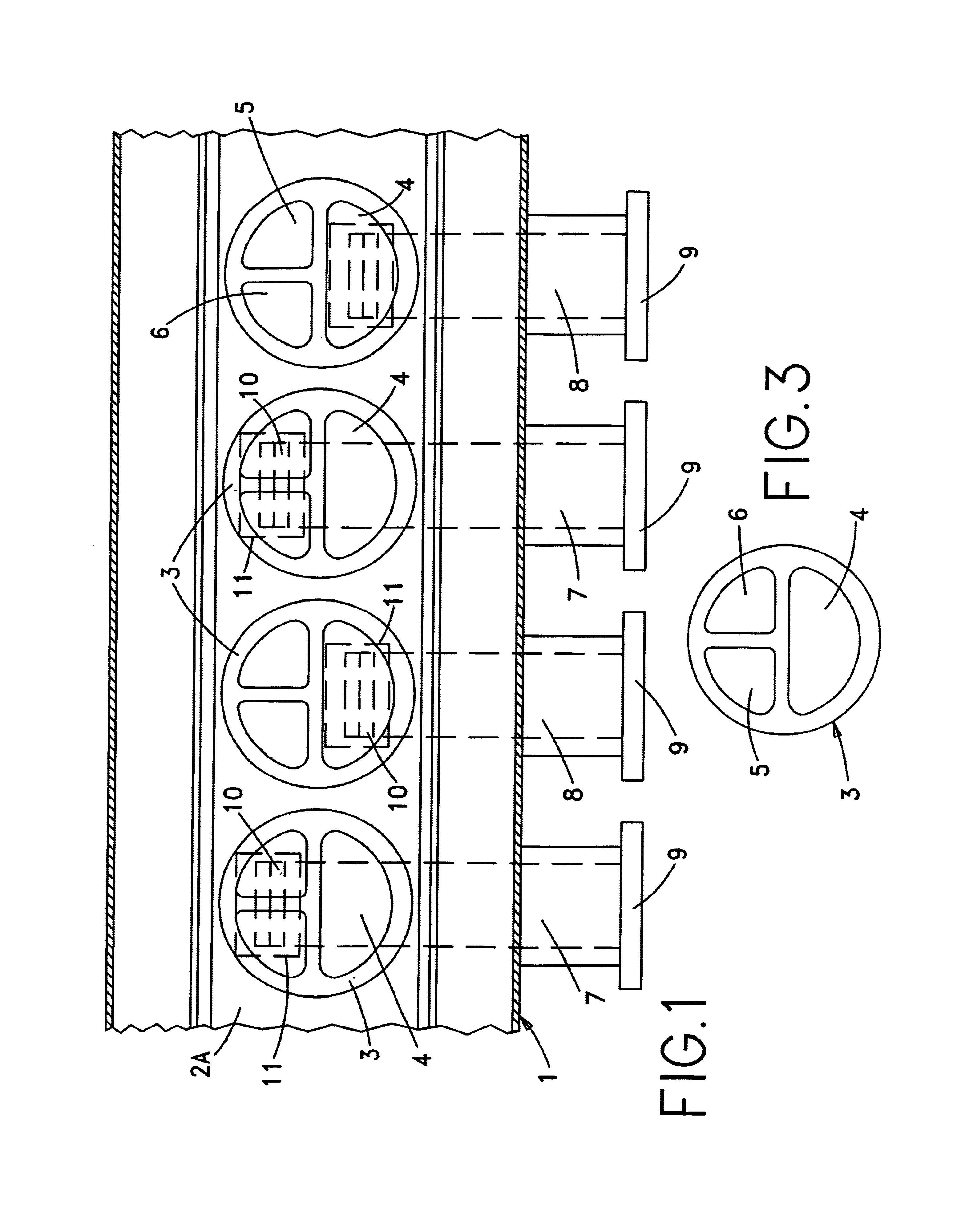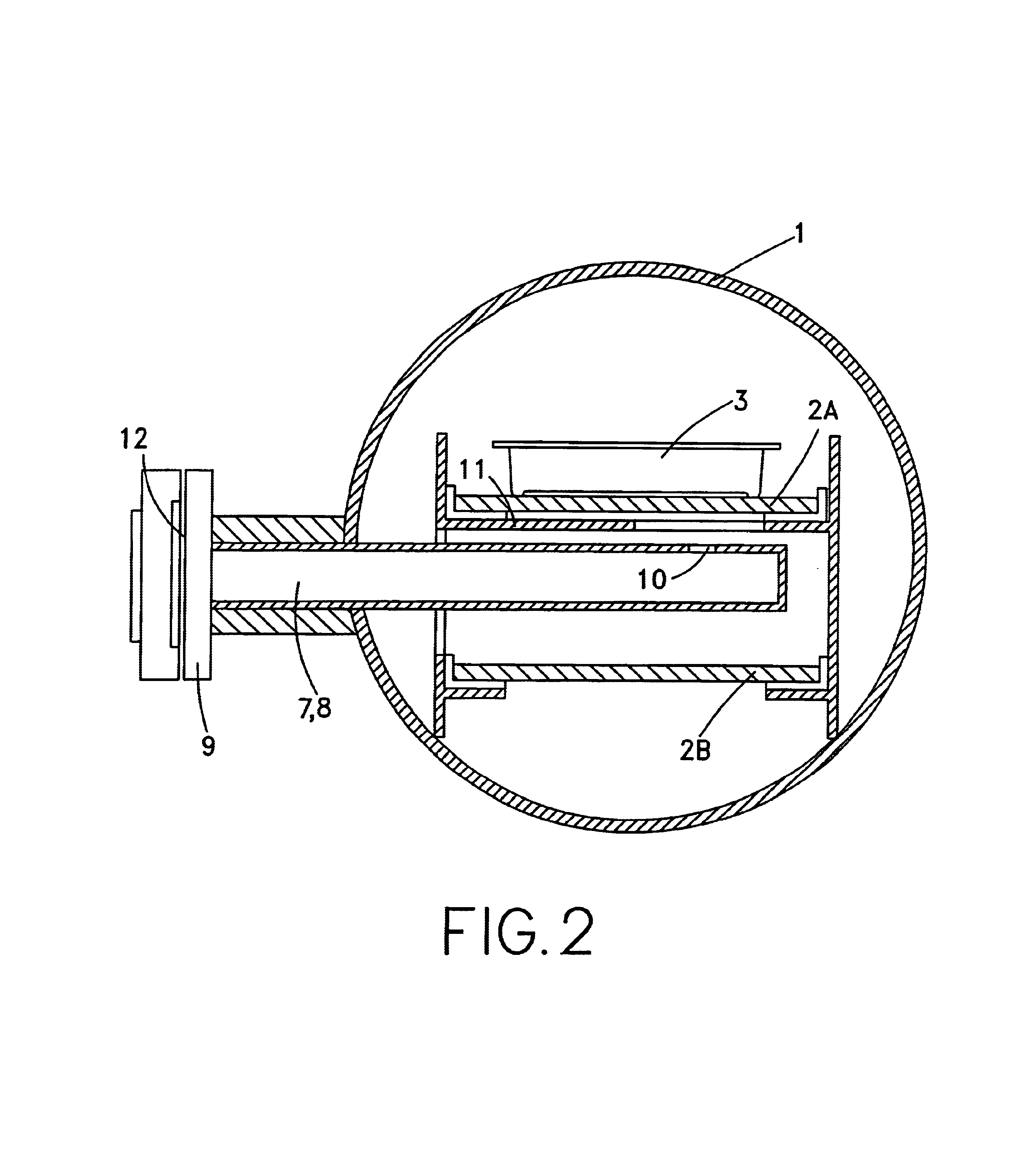Method and device for microwave-heating prepared meals sealed in trays
- Summary
- Abstract
- Description
- Claims
- Application Information
AI Technical Summary
Benefits of technology
Problems solved by technology
Method used
Image
Examples
Embodiment Construction
[0032]Disposed in the tubular autoclave 1 is a conveyor belt 2 comprising top strand 2A and bottom strand 2B. Arranged on top strand 2A are trays 3 with food portions in the compartments 4, 5, 6 of the tray 3. For example, compartment 4 can contain meat and gravy, compartment 5 potatoes or noodles, and compartment 6 vegetables.
[0033]Projecting into the autoclave 1 from the side are waveguides 7, 8, to whose flanges 9 are connected microwave generators (not shown). Waveguides 7 are longer than waveguides 8. Both types of waveguides have at their ends slits 10 from which the microwaves are decoupled. The slits 10 in the long waveguides 7 can serve to heat tray compartments 4 containing meat and gravy, while slits 10 in the shorter waveguides 8 serve to heat compartments 5 and 6, containing noodles, potatoes and vegetables, of tray 3.
[0034]The slits 10 are directed upward and are arranged immediately beneath the tray 3 containing the food portions to be heated. Between the slits 10 and...
PUM
 Login to View More
Login to View More Abstract
Description
Claims
Application Information
 Login to View More
Login to View More - Generate Ideas
- Intellectual Property
- Life Sciences
- Materials
- Tech Scout
- Unparalleled Data Quality
- Higher Quality Content
- 60% Fewer Hallucinations
Browse by: Latest US Patents, China's latest patents, Technical Efficacy Thesaurus, Application Domain, Technology Topic, Popular Technical Reports.
© 2025 PatSnap. All rights reserved.Legal|Privacy policy|Modern Slavery Act Transparency Statement|Sitemap|About US| Contact US: help@patsnap.com



